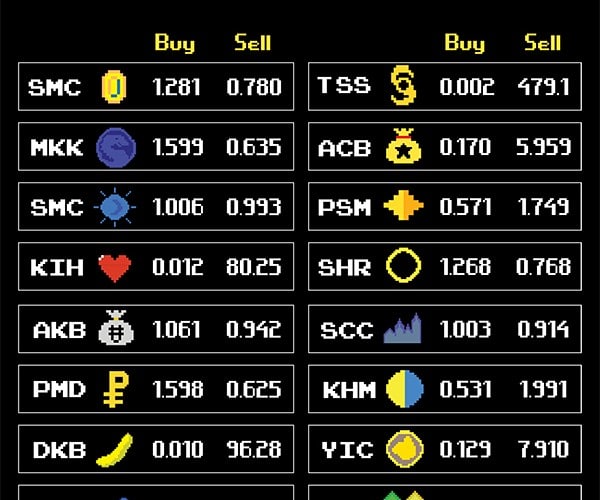In the non-pixelated world, gamers do not have a high reputation score. The average gamer is assumed to have low stats in athletics, academics and social awareness. Every once in a while gamers briefly enjoy the spotlight when a scientific study proves they have superior hand-eye coordination or excel at nonsensical logic puzzles when compared to non-gaming test groups. When we look for successful people, we do not look for gamers; we look for marketers.
Marketers are exemplars of American success. Well-dressed business professionals are considered the upper echelon of our capitalist society. However, for every dollar traded across the world by these business professionals, billions are traded online in virtual market boards that are entirely sustained by gamers.
Warframe, a cooperative shooter game designed by Digital Extremes is one such example. Digital Extremes takes no part in its marketplace, where in-game items are traded, it is run by players.

The market currency is “platinum,” a currency you can trade on the Digital Extremes website at an exchange rate of of 15 platinum for every U.S. dollar. This market thrives because few things can be traded in game: blueprints and mods for equipment, along with platinum. Although platinum can buy things from Digital Extremes, special equipment is only available at certain times, dropping specific enemies in game, and at varying rarity.
Thus, players determine the value of an item depending on how hard it is to obtain it. The harder the item is to obtain, the more platinum it will cost. An example of this is the Warframe — a character players can use — called Frost Prime. Frost Prime is only available in the Christmas season by completing a quest that only give the player a chance at attaining Frost Prime parts, which are then assembled and built. A player who manages to get a Frost Prime set could easily sell it the same season for around 100 to 200 platinum. However, if they were to wait till after Christmas — maybe even into the summer — the price can shoot up to the 800 to 900 platinum.
That was until Twitch gave Frost Prime away as a Twitch Prime prize. Making all Frost Prime profits null.
Warframe is an example of a game where the in-game currency is not directly transferable back to dollars. However, a few have in-game currency that holds a direct, real-world exchange value. EVE Online’s InterStellar Kredit currency holds an exchange rate of one cent to every one million ISK. Some players in EVE have trillions. That translates into tangible assets, and EVE Online broke international news for having a battle — The Bloodbath of B-R5RB — where over 300,000 real-life U.S. dollars in assets were lost.
These markets work on a principle best described as “dimes for time.” If something takes hours to obtain in game, its value in “dimes” is based on the “time” it takes to get it. If you want a brand-new spaceship in a game, but don’t have time to get all the parts or blueprints, the best option can be to pay real-world money to someone in the game who has taken the time to create exactly what you want.
Most triple-A game developers and publishers use this strategy to increase profits. Ubisoft allows you to work for all of the necessary funds to buy operators, playable characters, in their shooter Rainbow Six Siege. Or, you can buy the in-game currency with actual dollars to eliminate all of the grinding.
Sure, you might want that MBA in a slick suit to manage your investments, but it is important to realize that gamers have figured out how to play microeconomics simulators with macros, and that marketers gained some experience points watching them do it.














Leave a Reply